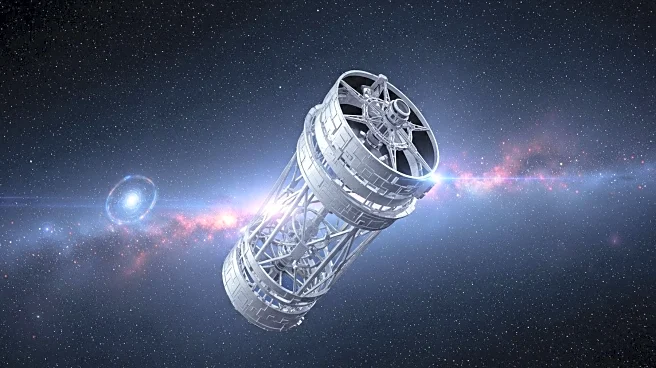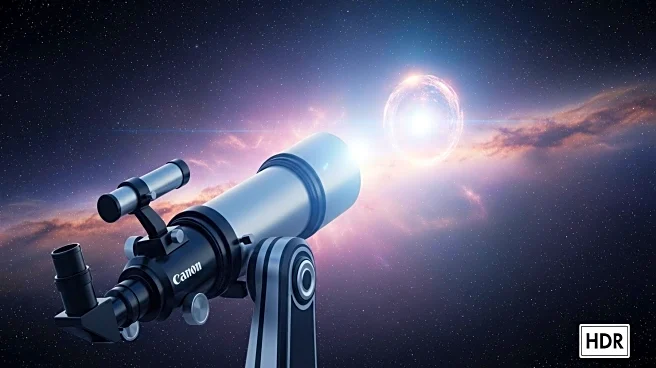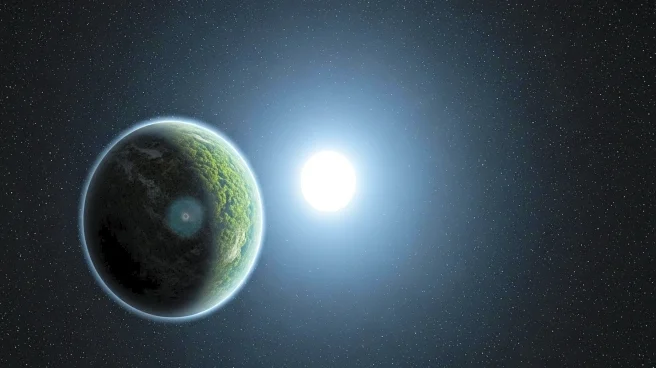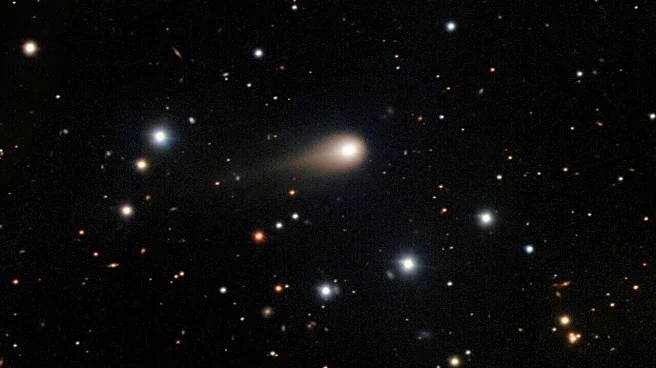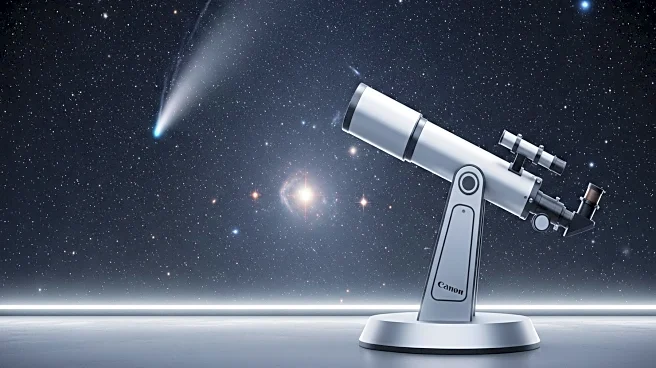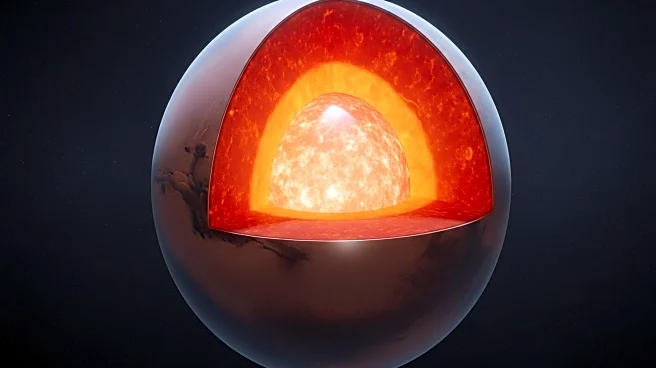What's Happening?
Astronomers using NASA's James Webb Space Telescope have identified strong evidence of a giant planet orbiting Alpha Centauri A, a star in the closest stellar system to our Sun. The Alpha Centauri system, located just 4 light-years away, consists of the binary stars Alpha Centauri A and B, and the red dwarf Proxima Centauri. While Proxima Centauri has three confirmed planets, the presence of planets around Alpha Centauri A and B has been difficult to confirm. The new observations from Webb's Mid-Infrared Instrument (MIRI) provide the strongest evidence yet of a gas giant orbiting Alpha Centauri A. If confirmed, this planet would be the closest to Earth orbiting in the habitable zone of a Sun-like star, although it is unlikely to support life as we know it.
Why It's Important?
The discovery of a giant planet in the Alpha Centauri system could significantly impact the field of exoplanet science. As the closest stellar system to Earth, Alpha Centauri has been a prime target for studying planets beyond our solar system. Confirmation of a gas giant in this system would provide a valuable opportunity for detailed characterization using Webb and other observatories. This could enhance our understanding of planetary formation and the conditions necessary for habitability. The potential discovery also underscores the capabilities of the James Webb Space Telescope in advancing our knowledge of distant worlds.
What's Next?
Further observations are needed to confirm the existence of the giant planet in the Alpha Centauri system. If confirmed, the planet would become a key object of study in exoplanet science, offering multiple opportunities for detailed analysis. Researchers will likely conduct additional observations with Webb and other telescopes to gather more data on the planet's characteristics and orbit. The findings could also prompt new theoretical models and simulations to better understand the dynamics of planetary systems in binary star environments.
